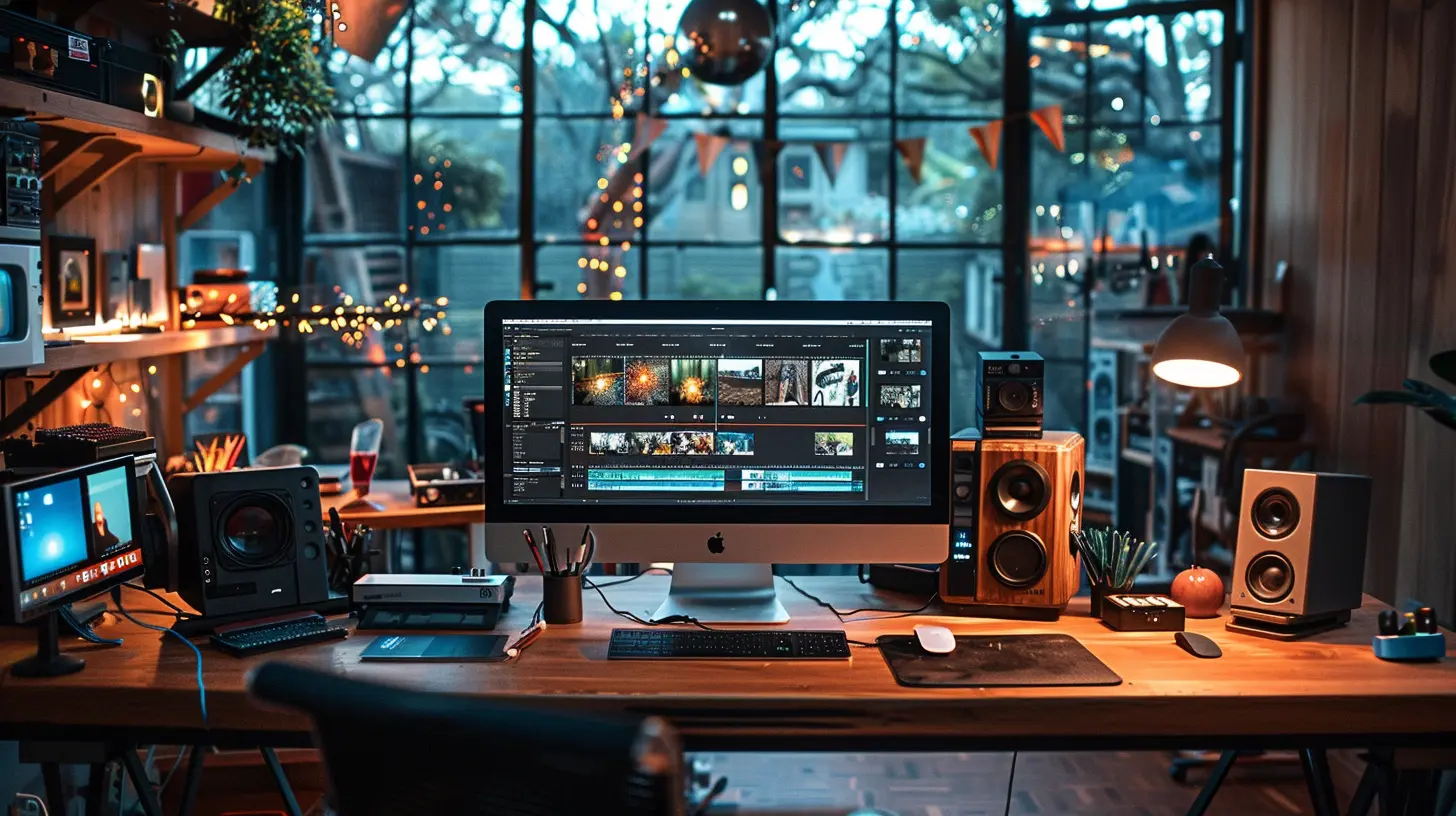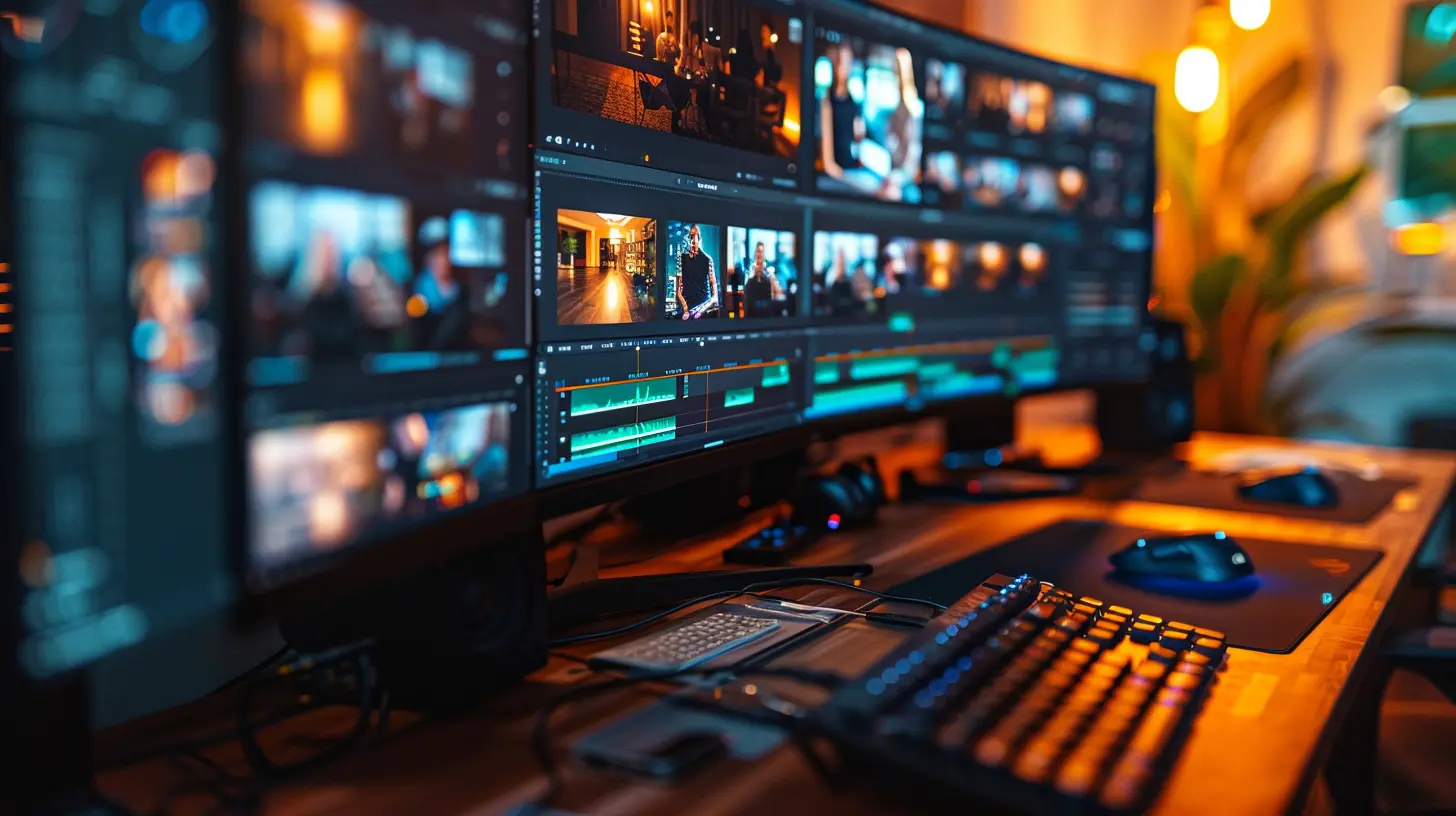How to Organize Your Media Library for Efficient Editing
25 September 2025
Ever feel like your media library is an overstuffed junk drawer? One where you know you saved that one crucial file, but now it's vanished into the digital abyss? Trust me, you're not alone. If you're battling a chaotic mess of footage, images, and audio files, it's time to take control.
A well-organized media library isn’t just for neat freaks—it’s a game-changer for anyone who edits videos, photos, or audio regularly. In this guide, we’ll break everything down step by step, so you can stop wasting time hunting for files and start creating faster and more efficiently. 
Why Your Media Library Is a Hot Mess (And Why It Matters)
Think about how much time you spend searching for files instead of actually editing. Now, multiply that frustration by every project you’ve ever worked on. Yeah, painful thought, right?Disorganization isn't just annoying—it slows everything down. A cluttered library leads to:
- Lost files (because "Untitled_004_Final_Final_v2" isn’t helping anyone).
- Wasted storage space (duplicate and unused files add up fast).
- Slower project delivery (because time spent searching is time wasted).
So, how do you stop the chaos before it spirals out of control? Let’s get into it. 
Step 1: Choose the Right Storage Setup
Before tackling organization, think about where your files will live. Will you store them locally or rely on cloud storage? Or maybe a hybrid approach?Local vs. Cloud Storage
| Storage Type | Pros | Cons ||---------------|------|------|
| Local (Hard Drives, SSDs, NAS) | Fast access, full control, no internet dependency | Prone to physical damage, limited by storage space |
| Cloud (Google Drive, Dropbox, OneDrive, etc.) | Accessible from anywhere, automatic backups | Slower access, potential subscription costs |
| Hybrid (Both Local & Cloud) | Best of both worlds, redundancy for safety | Requires syncing and management |
For those with massive raw files (especially video editors), external SSDs or NAS (Network-Attached Storage) might be the way to go. Cloud storage works best for collaboration or smaller files. 
Step 2: Develop a Consistent Folder Structure
A messy file structure is like a house without rooms—everything is just dumped in one place. You need a system that makes sense.The Golden Rule: Categorization is Key
Create master folders and break them down into subfolders. Here’s a solid file structure:
📂 Media Library
├── 📁 Projects
│ ├── 📁 Project_Name_YYYY-MM-DD
│ ├── 📁 Raw_Footage
│ ├── 📁 Audio
│ ├── 📁 Graphics
│ ├── 📁 Final_Exports
│
├── 📁 Assets
│ ├── 📁 Stock Footage
│ ├── 📁 Music & Sound Effects
│ ├── 📁 Templates & Presets
│
├── 📁 Backup
By organizing files project-wise and asset-wise, you can always find what you need in seconds. 
Step 3: Use a Smart File Naming Convention
If your filenames look something like `IMG_20240315_123456.MOV`, it’s time for a change.A Good Naming Convention Saves Time
Try this format:
[ProjectName]_[Date]_[Type]_[Version].[Format]
For example:
BrandAd_2024-06-01_RawFootage_v1.MP4
PodcastEpisode5_2024-06-01_Audio_v3.WAV
This way, every file tells you what it is, when it was created, and which version it is at a glance.
Step 4: Tag, Rate, and Categorize Files
Most media managers (like Adobe Bridge, Lightroom, or Final Cut Pro) let you add metadata, which includes keywords, ratings, and color labels.- Tags & Keywords – Label files with relevant terms like “interview,” “slow-motion,” or “B-roll.”
- Star Ratings – Quickly mark your best shots with a 5-star system.
- Color Codes – Use colors to categorize different types of content (e.g., green = final cuts, red = needs edits).
This adds an extra layer of searchability, so even if your folders are well-structured, you can still filter by metadata for faster access.
Step 5: Backup Your Files Like a Pro
Imagine working for weeks on a project, only for your hard drive to crash. Nightmare fuel, right? That's why regular backups are essential.The 3-2-1 Backup Rule
A rock-solid backup strategy follows this rule:- 3 copies of your data
- 2 types of storage (e.g., external drive + cloud)
- 1 off-site backup (so a disaster won't wipe everything out)
Using an automated backup service (like Backblaze or Time Machine) will save you from potential disasters.
Step 6: Manage Duplicate and Unused Files
Over time, your media library will accumulate unnecessary files—duplicates, old versions, or unused assets.Here’s how to clean up the clutter:
- Use duplicate file finders like Gemini 2 or CCleaner.
- Regularly delete or archive old project files.
- Create an "Archive" Folder for completed projects and move them there.
By keeping only what you need, your library stays lean and mean.
Step 7: Automate the Process
Let’s face it—manually organizing files can get tedious. The good news? Automation tools can do the heavy lifting.- Adobe Bridge: Batch rename files and add metadata.
- Post Haste: Automatically set up folder structures for new projects.
- Automator (Mac) or File Juggler (Windows): Move and rename files automatically based on rules.
Once you set up automation, your media library practically organizes itself.
Conclusion: Stay Organized, Save Time, Edit Faster
Your media library should help you work smarter, not harder. If you take the time to organize it now, you’ll save countless hours down the road.Here’s the game plan in a nutshell:
✅ Choose the right storage setup (local, cloud, or hybrid).
✅ Create a consistent folder structure (projects, assets, backups).
✅ Use a proper file naming convention (so you don’t lose track).
✅ Tag and categorize files for quick searches.
✅ Back everything up to prevent disasters.
✅ Remove duplicate or unused files to keep storage clean.
✅ Automate as much as possible.
The best part? Once you set up these systems, maintaining them is a breeze. So go ahead—tame that chaotic media library, and make your editing workflow feel like a dream.
all images in this post were generated using AI tools
Category:
Video Editing ToolsAuthor:

Reese McQuillan
Discussion
rate this article
1 comments
Alice Ruiz
Transform your media chaos into creativity! A well-organized library empowers your edits, enhances productivity, and inspires innovation. Let’s get started!
September 30, 2025 at 3:18 AM

Reese McQuillan
Absolutely! An organized media library is key to unlocking creativity and streamlining the editing process. Let’s dive in!


